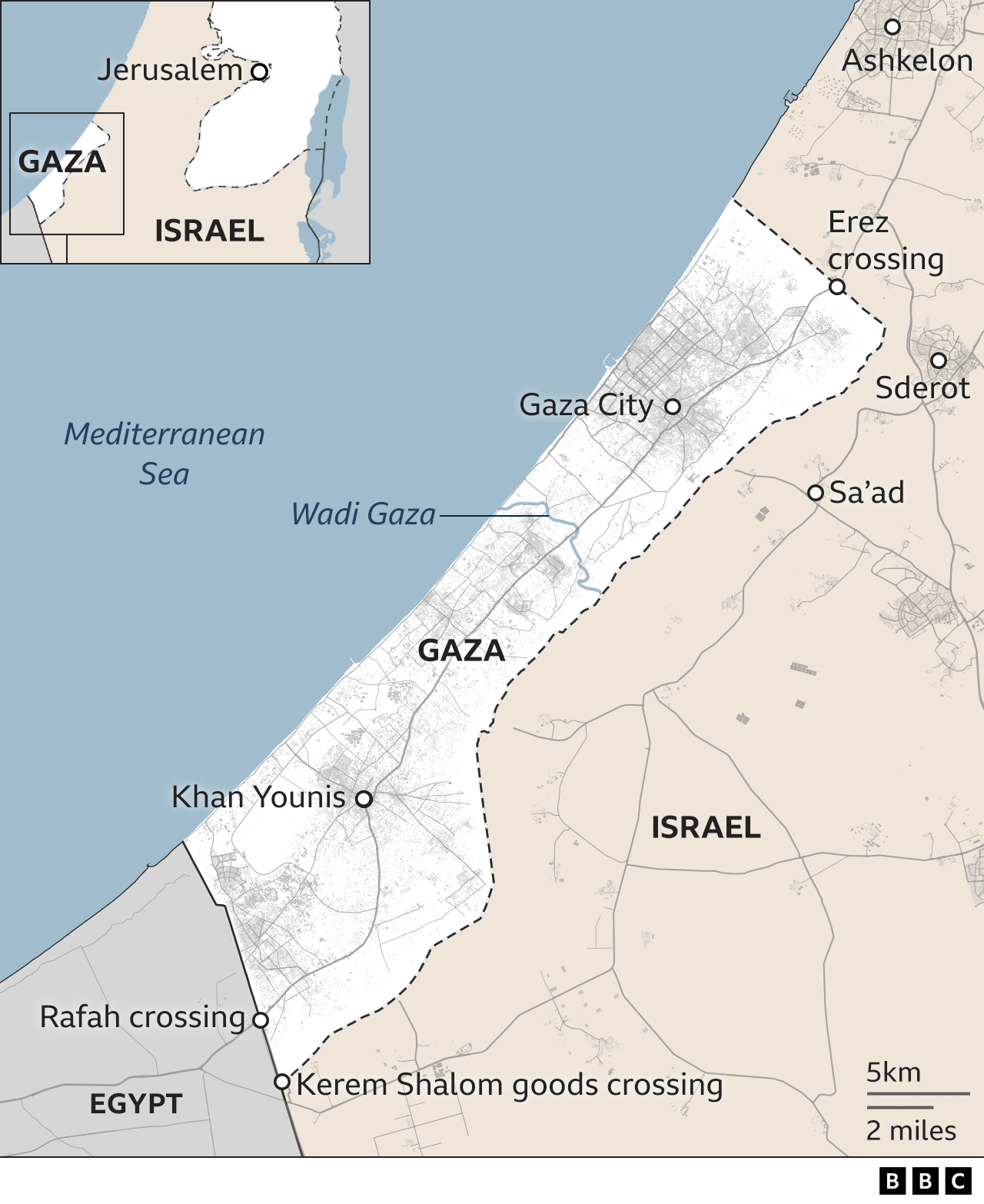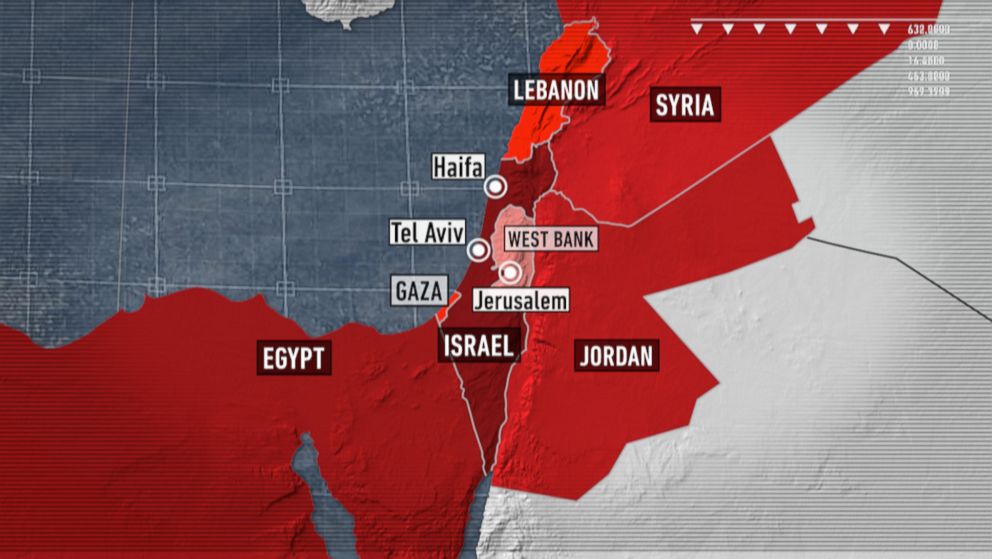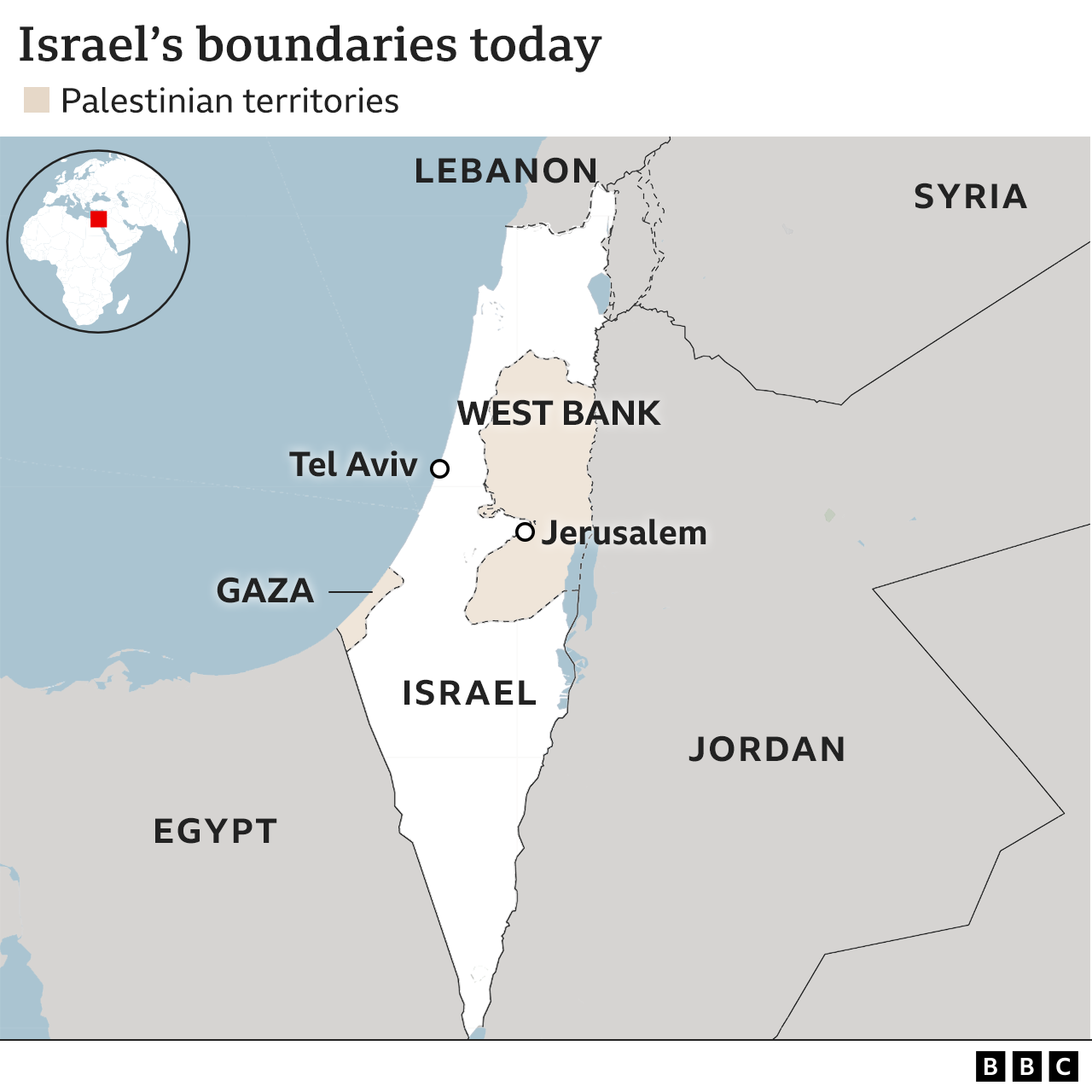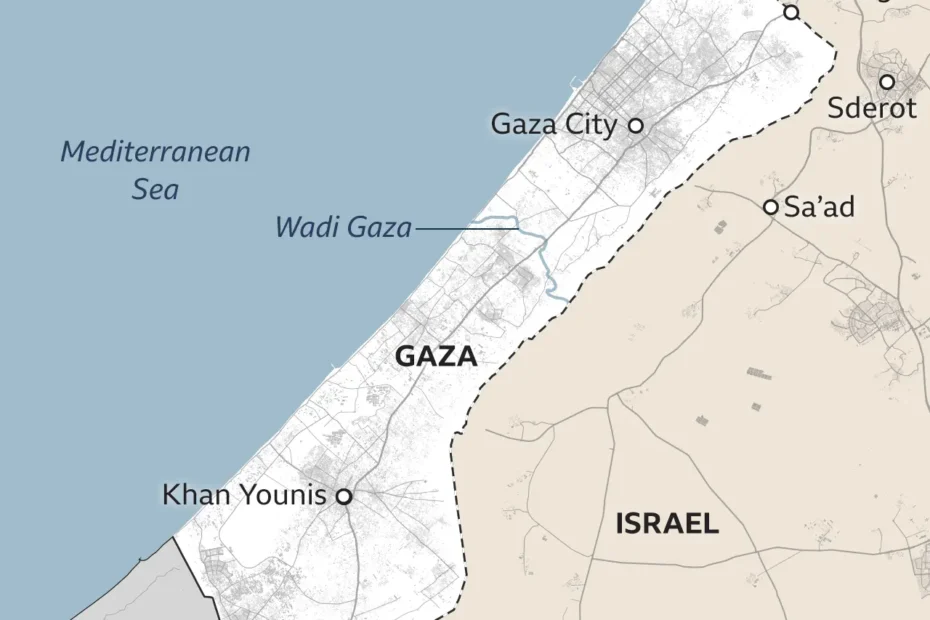The Gaza–Israel conflict is a topic that you might hear about often, but understanding its complexities can be overwhelming. This ongoing conflict affects millions of lives, shaping the political landscape of the Middle East and influencing international relations.
You may have questions about its origins, the key players involved, and how it impacts everyday people like you. By exploring the nuances of this conflict, you can gain a clearer perspective on why it persists and what it means for the future.
As you read on, you’ll uncover the human stories behind the headlines, helping you connect emotionally and intellectually with a situation that seems distant yet touches us all. Stay with us as we delve deeper into the heart of this enduring struggle, offering insights that could change how you view the world.

Credit: www.bbc.com
Historical Context
The Gaza–Israel conflict has deep historical roots. It influences current global politics. Understanding its history is essential. This conflict’s history stretches back decades. It involves complex socio-political dynamics. Here’s a look at its historical context.
Origins Of The Conflict
The roots of the Gaza–Israel conflict trace back to the early 20th century. Jewish and Arab communities lived in Palestine under Ottoman rule. Tensions rose after World War I. The fall of the Ottoman Empire led to new territorial arrangements. The British Mandate for Palestine was established. During this time, Jewish immigration increased. Many Jews sought a homeland following persecution in Europe. Arab residents opposed this influx. They feared loss of land and autonomy.
The Balfour Declaration of 1917 fueled tensions. It supported a national home for Jews in Palestine. Arab leaders felt betrayed by British promises. The division between communities widened. Both groups sought self-determination. The United Nations proposed a two-state solution in 1947. This plan aimed to establish separate Jewish and Arab states. Jewish leaders accepted the plan. Arab leaders rejected it. This rejection led to further conflict.
Major Events And Turning Points
The conflict has seen many significant events. The 1948 Arab-Israeli War was a major turning point. Israel declared independence. Neighboring Arab states attacked. The war ended with armistice agreements in 1949. Israel controlled more territory than planned. Many Palestinians became refugees. This created lasting regional tension.
The Six-Day War in 1967 marked another key event. Israel captured the Gaza Strip, West Bank, and East Jerusalem. These territories remain central to the conflict today. The Oslo Accords in the 1990s aimed for peace. They established Palestinian self-governance in some areas. Hope for resolution grew but quickly faded. Violence and mistrust continued.
The ongoing blockade of Gaza started in 2007. Israel imposed it following Hamas’ takeover. This blockade has worsened living conditions in Gaza. It remains a major humanitarian concern. Each of these events has shaped the conflict’s trajectory. Understanding these historical events helps grasp the conflict’s complexity.
Political Dynamics
The Gaza-Israel conflict involves complex political dynamics, impacting regional stability. Tensions often arise from territorial disputes and differing political agendas. These tensions frequently lead to violence, affecting civilians on both sides.
The Gaza–Israel conflict is deeply rooted in complex political dynamics. Understanding these dynamics can help you grasp the ongoing tensions and their implications. Political forces in the region are diverse, often leading to shifting alliances and strategies. How do these political dynamics shape the conflict, and what role do key players like Hamas, Fatah, and the Israeli government play?Role Of Hamas And Fatah
Hamas and Fatah are two major Palestinian factions with distinct political ideologies and strategies. Hamas, controlling Gaza since 2007, is known for its militant stance against Israel. It has often been at the forefront of conflicts, using both political and military means to assert its influence. Fatah, on the other hand, governs the West Bank and is seen as more moderate. It seeks diplomatic solutions and has engaged in peace talks with Israel. This division between Hamas and Fatah has led to a fragmented Palestinian political landscape. How does this internal division affect their ability to negotiate with Israel? The rivalry between Hamas and Fatah not only complicates peace efforts but also impacts the daily lives of Palestinians. Many have expressed frustration over the lack of unified leadership.Israeli Government Strategies
The Israeli government employs a range of strategies to address security concerns and political challenges. These strategies include military operations, diplomatic negotiations, and economic measures. For instance, Israel often conducts military actions in response to perceived threats from Gaza. On the diplomatic front, Israel has engaged in peace talks and normalization agreements with several Arab countries. These moves aim to bolster regional alliances and reduce isolation. However, these strategies are often met with skepticism and resistance from various quarters. Israel also uses economic measures, such as blockades and restrictions, to exert pressure on Gaza. These strategies are intended to weaken Hamas but often result in humanitarian challenges. How effective are these strategies in achieving long-term peace and security? Understanding these political dynamics offers a clearer picture of the Gaza–Israel conflict. It highlights the complexities and challenges faced by both sides. What do you think could be a viable path toward peace in this region?Military Engagements
The Gaza–Israel Conflict is marked by intense military engagements. These confrontations shape the region’s political landscape. They influence the lives of countless individuals. Military actions often escalate tensions. They lead to significant repercussions for both sides. Understanding these engagements is crucial. It offers insight into the ongoing conflict.
Recent Conflicts And Skirmishes
Recent clashes between Gaza and Israel have drawn global attention. Short-lived skirmishes often escalate quickly. They involve airstrikes, rocket attacks, and ground operations. Each side claims to defend its territory. The military strategies employed are complex. They reflect years of deep-seated animosity. These conflicts disrupt daily life in the region. Both sides experience significant losses.
Military technology plays a key role. Advanced weaponry shapes the nature of engagements. Drones and precision-guided missiles are frequently used. These technologies impact the effectiveness of military actions. They influence the scale of destruction. Reports of casualties and damage appear regularly. Media coverage highlights the intense nature of these conflicts.
Impact On Civilian Populations
Civilians often bear the brunt of military engagements. They face displacement, injury, and loss. Homes and infrastructure are frequently damaged. Access to basic services is disrupted. Many live in constant fear of attacks. This psychological impact is profound. It affects mental health and community stability.
Children are particularly vulnerable. Their education is often interrupted. Schools may be damaged or destroyed. Families struggle to find safe spaces. Humanitarian aid is crucial. It provides necessary support and relief. International organizations work tirelessly in the region. Their efforts aim to alleviate civilian suffering.
The conflict’s toll on daily life is immense. Economic activity declines significantly. Businesses face closures and uncertainty. Social ties weaken under the strain. Communities strive to rebuild and recover. Despite challenges, resilience is evident. People continue to hope for peace and stability.
International Involvement
International involvement in the Gaza–Israel conflict plays a crucial role in peace efforts. Various countries mediate, provide aid, and influence negotiations. Global organizations also work to address humanitarian needs and promote dialogue between the conflicting parties.
International involvement in the Gaza-Israel conflict has always been a topic of intense debate. As you explore the dynamics of this issue, it’s crucial to understand how various international bodies and nations have shaped the narrative and actions surrounding this long-standing conflict. Whether through diplomatic channels or direct interventions, the global community has played a significant role. How does this international involvement affect the ground realities in Gaza and Israel? Let’s delve into the specifics.United Nations Resolutions
The United Nations has been actively engaged in the Gaza-Israel conflict for decades. It has passed numerous resolutions aiming to address the humanitarian crisis and promote peace. Resolutions often call for ceasefires, humanitarian aid, and peace talks. They reflect the international community’s desire to find a lasting solution. However, the effectiveness of these resolutions is frequently questioned. You might wonder, do they truly bring about change, or are they just words on paper? The challenges lie in implementation and enforcement.Influence Of Key Nations
Key nations, including the United States, Egypt, and Turkey, have significant influence over the conflict’s progression. Each brings unique perspectives and interests. The U.S., for instance, has been a steadfast ally of Israel. Its policies often reflect strategic interests in the region. Egypt and Turkey have historically played mediating roles, leveraging their regional connections. These nations can sway negotiations and impact peace processes. But here’s a thought: does the involvement of these nations accelerate peace, or does it complicate the conflict further? Their actions often stir debate about biases and motivations. International involvement in the Gaza-Israel conflict is complex and multifaceted. As you consider these perspectives, ask yourself: what should be the role of the global community in fostering peace? How can nations and organizations contribute more effectively? This ongoing discourse continues to challenge policymakers and citizens worldwide.Humanitarian Challenges
The Gaza-Israel conflict presents severe humanitarian challenges. Many people face daily struggles for basic needs. The situation in the region impacts every aspect of life. From limited access to food and water to the lack of proper healthcare. These challenges create a difficult environment for residents. Understanding these issues is crucial to appreciating the complex dynamics at play.
Life In Gaza
Gaza is a small, densely populated area. Over two million people live there. The region experiences frequent power outages. Access to clean water remains a constant challenge. The local economy struggles due to restrictions. Jobs are scarce, and poverty is widespread. Schools and hospitals often face shortages of supplies. The ongoing conflict affects every part of daily life. Safety concerns are ever-present, creating a tense atmosphere.
Aid And Relief Efforts
Many organizations work to provide aid in Gaza. These groups focus on delivering food, water, and medical supplies. They face obstacles like border restrictions and limited resources. Humanitarian aid aims to support the most vulnerable. Relief efforts also focus on rebuilding infrastructure. Schools, hospitals, and homes need constant repairs. International support plays a crucial role in these efforts. Coordinating aid requires cooperation from multiple parties. Despite challenges, aid continues to be a lifeline for many.

Credit: abcnews.go.com
Peace Efforts
Efforts to bring peace in the Gaza–Israel conflict focus on diplomacy and dialogue. Leaders aim to reduce tensions and promote understanding. Peace talks and international support play crucial roles in seeking long-term solutions.
The Gaza-Israel conflict has been a longstanding issue, marked by cycles of violence and moments of fragile calm. Amidst the turmoil, peace efforts continue to emerge, aiming to pave the way towards a sustainable resolution. These efforts are not just political maneuvers but genuine attempts to bring stability to the region. Understanding the dynamics of these peace efforts allows us to see both the promise and the challenges that lie ahead.Diplomatic Initiatives
Diplomatic initiatives have been at the heart of peace efforts. Countries like Egypt and the United States often play mediators, facilitating talks between the conflicting parties. These initiatives typically involve negotiations on ceasefires and agreements on humanitarian aid. International organizations also contribute by hosting peace conferences. They aim to create platforms where dialogue can flourish. Such initiatives are vital as they bring diverse perspectives to the table, increasing the chances of finding common ground. However, diplomacy is more than just talks. It’s about building relationships that can withstand the test of time. How can these diplomatic efforts translate into lasting peace? This is the question that keeps many diplomats awake at night.Barriers To Resolution
The road to peace is fraught with barriers. Deep-seated mistrust between the parties involved often hinders progress. When trust is lacking, even the most well-intentioned efforts can falter. Political agendas and external influences further complicate the situation. For example, regional powers may have vested interests that do not align with peace. This can lead to stalled negotiations or agreements that are not fully implemented. Moreover, the humanitarian crisis in Gaza adds another layer of complexity. With basic needs unmet, peace talks often take a backseat to immediate survival concerns. Can peace be achieved when people are struggling to access food, water, and healthcare? As you reflect on these barriers, consider the impact of sustained efforts and the potential of small, incremental steps. Peace might not come overnight, but each effort brings us closer to understanding and resolution. What role can you play in supporting these initiatives?Media And Public Perception
Media shapes public perception of the Gaza–Israel conflict significantly. Images and headlines can influence emotions and viewpoints, affecting opinions globally. Balanced coverage is essential to ensure diverse perspectives are heard and understood.
The Gaza-Israel conflict is a highly sensitive and complex issue that attracts global attention. Media plays a crucial role in shaping public perception. How we understand the conflict often depends on the stories we read, see, and hear. The narratives crafted by media outlets can sway opinions and ignite discussions, making it essential to look at how coverage affects global perception.Coverage Of The Conflict
Media coverage of the Gaza-Israel conflict varies widely across platforms. Some outlets offer detailed analysis, while others focus on sensational headlines. How often do you check multiple sources? The information you receive might be shaped by who delivers it. Different media outlets have different biases. Some favor one side over the other, which can lead to skewed reports. Are you aware of these biases when you consume news? It’s crucial to recognize this to form a balanced view. Social media adds another layer. Platforms like Twitter and Facebook allow real-time updates, but they also spread misinformation. Do you verify facts before sharing? This is increasingly important to prevent the spread of false narratives.Impact On Global Opinion
The media’s portrayal of the conflict influences global opinion. A single photo or video can evoke strong emotions, shaping public attitudes. Have you ever changed your viewpoint after seeing a powerful image? This highlights the media’s impact. Public perception can affect international relations. Countries may change policies based on how their citizens perceive the conflict. What role do you think public opinion plays in political decisions? It’s a powerful force that can drive change. Sometimes, media coverage leads to activism. People might participate in protests or campaigns to support their views. Have you ever felt compelled to act after reading a news story? This is a testament to how media can mobilize individuals. In the end, it’s up to you to seek diverse perspectives and remain critical of what you read. Are you ready to challenge the narratives you encounter? Doing so can help ensure a more informed and balanced understanding of the Gaza-Israel conflict.
Credit: www.bbc.com
Future Prospects
The Gaza-Israel conflict’s future prospects hinge on peace talks and international interventions. Long-term stability requires cooperation and compromise from both sides. Ongoing dialogue and diplomacy can pave the way for a peaceful resolution.
The Gaza–Israel conflict has been a complex and deeply rooted issue, capturing global attention and concern. As we ponder the future prospects, it’s essential to consider both the potential pathways to peace and the ongoing challenges that could shape the region’s fate. Understanding these elements can help you form a more nuanced view of what lies ahead for both communities.Potential Pathways To Peace
Several initiatives have been proposed to bring peace to the region. International diplomacy plays a significant role, with numerous countries and organizations offering mediation efforts. You might wonder, can these diplomatic endeavors finally pave the way for lasting peace? Economic collaboration could be another pathway. By creating joint ventures and enhancing trade, both sides could benefit economically, fostering mutual dependency and reducing hostility. Would economic incentives be enough to drive political changes? Grassroots movements and people-to-people interactions can also make a difference. When individuals from both sides engage in dialogue, they often find common ground. Have you ever considered how personal stories and friendships could challenge deep-seated prejudices?Ongoing Challenges
Despite potential solutions, significant challenges remain. One major hurdle is the deep-seated mistrust between communities, exacerbated by years of conflict. How do you rebuild trust when past wounds are still fresh? Political instability and leadership changes can derail peace efforts. Shifts in government policies might introduce new complexities. Can stable leadership be a catalyst for consistent and effective peace negotiations? Security concerns and military operations continue to be a pressing issue. Both sides prioritize their safety, often leading to a cycle of violence. How can security be ensured without further escalating tensions? Understanding these dynamics is crucial for anyone interested in the future of the Gaza–Israel conflict. By contemplating both the pathways to peace and the challenges, you can better appreciate the intricate nature of this ongoing issue.Frequently Asked Questions
Why Is Gaza So Important To The Jews?
Gaza holds historical significance for Jews due to its mention in biblical texts. It was part of ancient Israel. Its strategic location connects Asia and Africa, making it vital for trade and military routes. Cultural and religious heritage in Gaza reinforces its importance to Jewish identity and history.
What Is The Conflict Between Gaza And Israel?
The conflict between Gaza and Israel involves territorial disputes, political tensions, and violence. It’s rooted in historical conflicts, religious differences, and competing national claims. Regular clashes and military operations exacerbate humanitarian crises. Both sides seek resolution, but peace efforts often stall due to deep-seated animosities and unresolved issues.
Why Is The Conflict Between Israel And Gaza?
The Israel-Gaza conflict arises from territorial disputes, historical tensions, and political differences. It involves clashes over land, religious sites, and self-governance. Ongoing hostilities include military actions, rocket attacks, and airstrikes. The situation is complex, fueled by historical grievances and differing ideologies, impacting regional stability and humanitarian conditions.
What Is The Issue Between Israel And Gaza?
The Israel-Gaza conflict stems from long-standing territorial disputes and political tensions. Both parties claim rights to land, resulting in military confrontations. The conflict impacts regional stability and involves issues like borders, security, and mutual recognition. Peace efforts often face challenges, prolonging the conflict and affecting civilians on both sides.
What Is The Gaza–israel Conflict About?
The Gaza–Israel conflict involves territorial disputes, political tensions, and military clashes between Israel and Palestinian groups.
Conclusion
The Gaza–Israel conflict remains complex and deeply rooted in history. Both sides have endured significant challenges and losses. Finding a lasting peace is crucial for future generations. Dialogue and understanding can bridge divides. Many people yearn for safety and normalcy.
Yet, achieving this requires patience and cooperation. The world watches, hoping for a resolution. Peace efforts must continue with determination. Humanity deserves a chance to heal and thrive. A peaceful future is possible with collective effort. Let’s support peaceful solutions and encourage dialogue.
Only then can true progress be made in this region.
